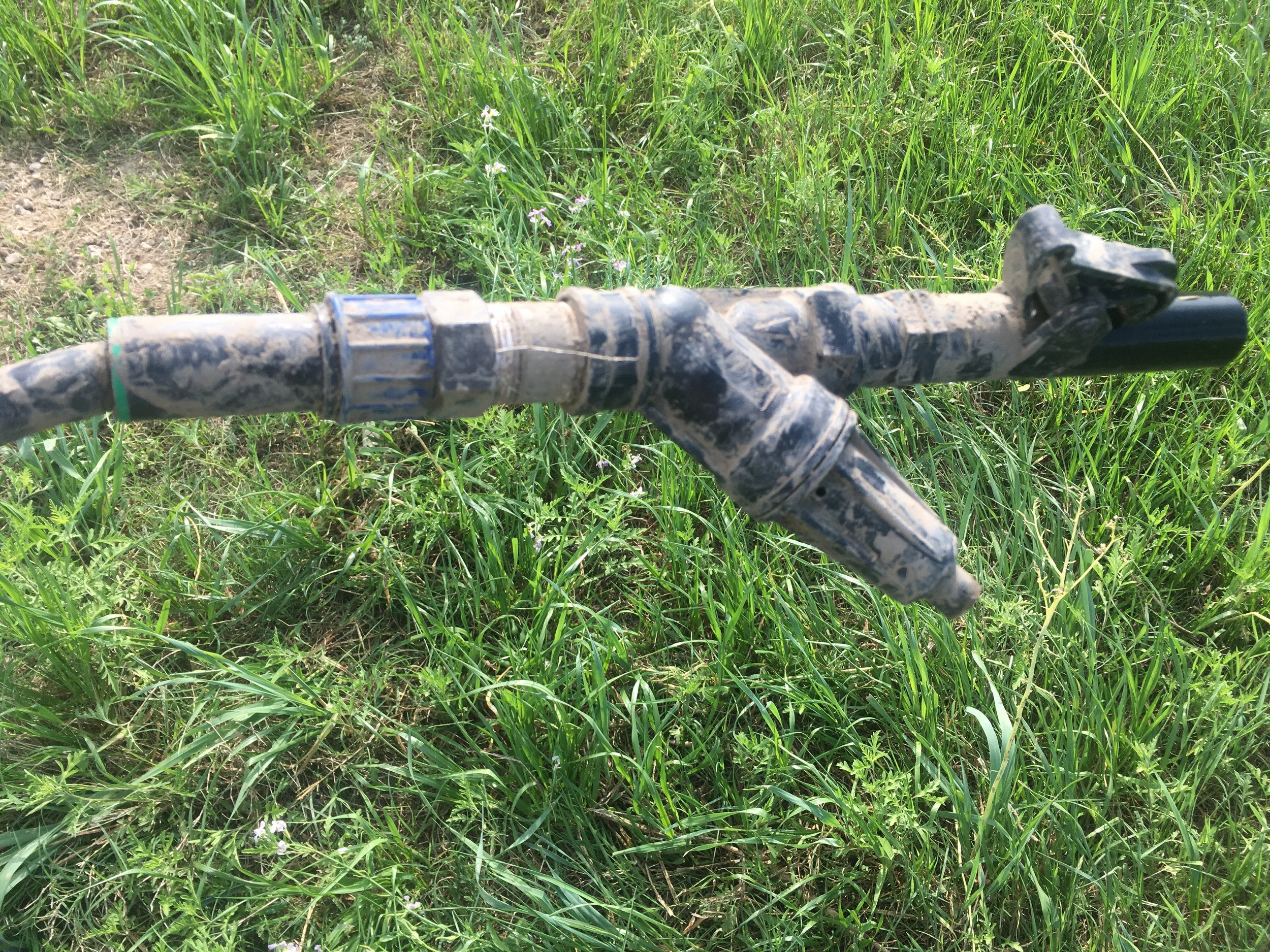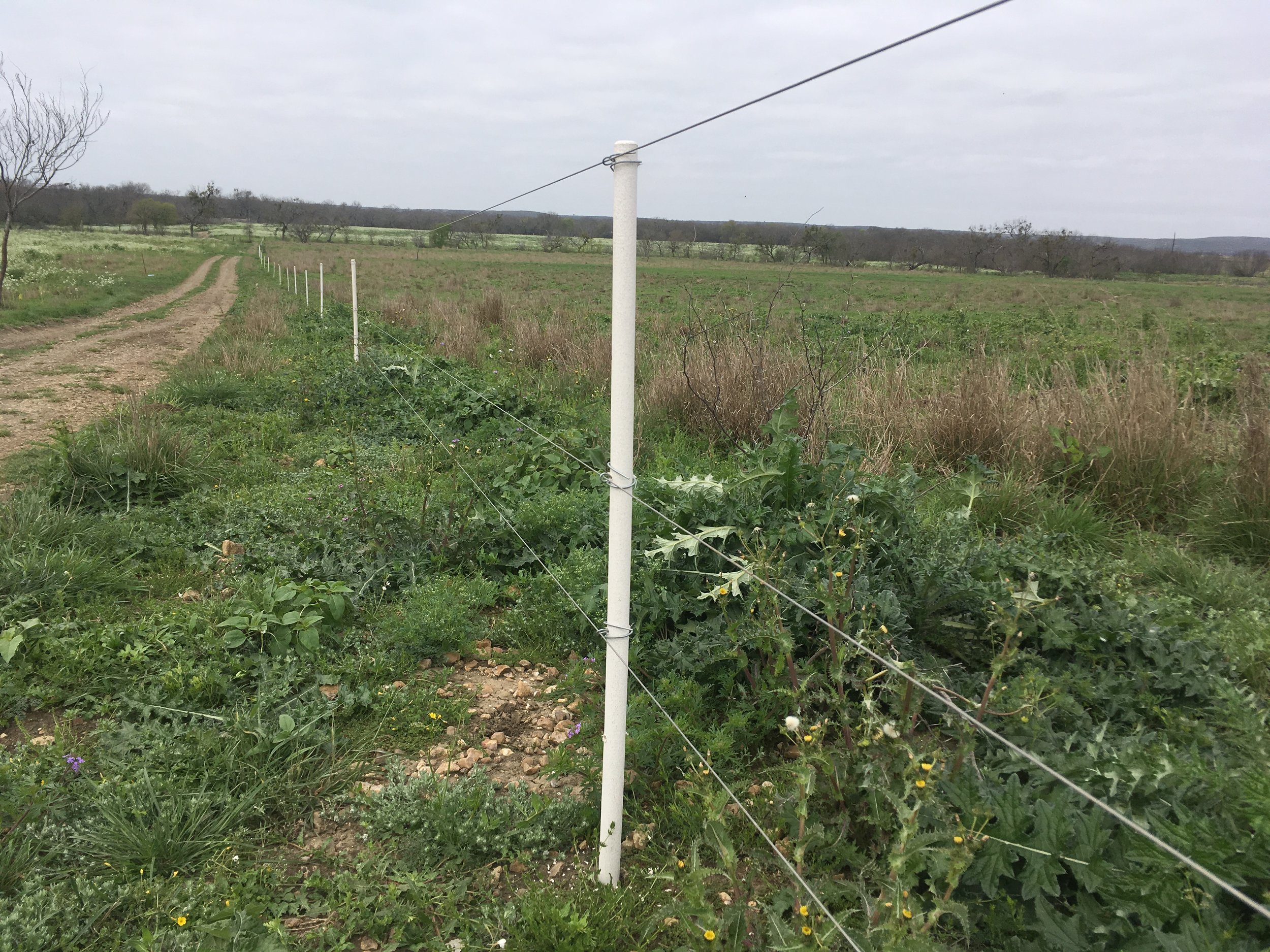A low cost watering system designed for rotational grazing
There are a two primary technologies that we utilize for our rotational grazing system: electric fencing and a portable watering system. A few weeks ago I explained our low-cost, efficient fencing system that we use at Parker Creek Ranch. This fencing system allows us to control our livestock so that we can graze them at a high density and give our pastures long rest periods. The other important component to this grazing system is a portable watering system. You can not build more pastures or paddocks without adequate water for your livestock. Over the past ten years we have designed a relatively low-cost, efficient watering system.
The primary component of any watering system is the source. Water may be sourced from a well, municipality, or surface water (ponds). We source our water utilizing several different strategies depending on the property and the resources available. I’m not going to go into depth about which source is best or how to install a solar-powered submersible pump in a well. Quite honestly if you’ve never done it before get someone to help you install your pump whether it’s being pulled from surface water or a well. We currently don’t allow our cattle to drink directly from ponds or creeks on most of our properties. It’s not that I’m against it, but we live in a fairly arid environment where ponds and creeks are important habitat for wildlife, thus we do our best to minimize disturbance in those riparian habitats. Our water is primarily drawn from a well and distributed throughout the ranch with pipelines.
The second component to consider is how to transfer water from it’s source to the point of use. There are two pipe options, either PVC or polypropylene (black poly). We bury our pipes in South Texas because it gets unbelievably hot here during the summer. If the pipe is laying on top of the ground water will come out too hot to drink. We have had exposed, pressurized black poly pipes rupture during the summer because the water was so hot. Honestly if your going to be serious about your watering system bury the lines. We primarily use PVC because most of our properties are in soils with a large amount of flint rock. Over time the rocks will create holes in black poly pipe. An important point to remember is to size the pipes according to the volume of water you need delivered to the point of use. Water requirements for cattle depend on weight, stage of production (such as lactation), and temperature. As you increase weight, the amount of water needed also increases. Same holds true for temperature, as temperatures increase, so does water intake. If your grazing multi-species consider their daily water requirements as well.
The last component of our system is the point of use. Remember we move our cattle throughout 23 permanent pastures at Parker Creek Ranch. Each of those pastures can be subdivided for daily moves. Each one of those pastures and paddocks needs water. The most economical and efficient way we have found to do that is with quick connect valves and a portable water trough. That’s right we only have one water trough for this whole ranch. Why put a trough in each pasture when it can be portable and easily moved daily with the rotation of the livestock? To achieve this we use Plasson quick-coupler valves placed strategically throughout our pastures. The image below shows the valve locations in each pasture. From these valves we can easily connect/disconnect the trough to move it. I’m not set on a specific trough. Years ago we purchased an Enduraplas trough from the local feed store. It has a float valve cover and several other features that make it an excellent choice for portable water. Unfortunately ours cracked and I’m no longer a big fan of Enduraplas. Also, the company sold their livestock water tanks a year ago and no longer distributes locally. I’m working on a new trough idea and will update you in the future. An important design consideration on your trough is to ensure it holds enough water so that when the herd is watering, which always seems to be at once, they don’t instantly drain the trough and push it through your fence. This will also be dependent on the volume of water coming to the trough. For example, ours is a 300 gallon trough and is sufficient for a hundred yearlings during normal weather. It takes about 5 minutes for the 300 gallon trough to refill. When the weather gets hot and the cattle are consuming more water we step up to a 500 gallon tank.
Some considerations when designing your water system:
Run your water lines in close proximity (as close as possible) and parallel to your permanent fences.
Make sure your well and distribution pipes are sized properly according to your livestock and other needs.
Strategically place water meters and shut off valves so that you can determine the location of leaks quickly and get them repaired.
Keep it simple. Don’t over complicate it.
Our watering system has been developed over ten years of trial and error. I’m not saying it’s perfect, but it works. Remember this system was specifically designed for portability. If designed strategically with the flow of the land and pastures this system can be relatively low cost. One factor to consider is that it will give you the ability to increase your carrying capacity over a period of time. In the past ten years we have increased the carrying capacity of Parker Creek Ranch two fold. Remember that’s like buying or leasing a second ranch for free.
Any questions or comments? Need our consulting services to help you design your fencing system, watering system, or developing whole farm/ranch plan? Contact us.












